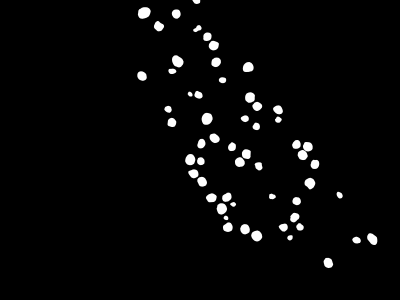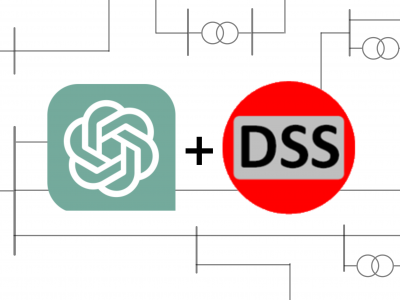Artificial Intelligence

Tuberculosis (TB) remains a major global health problem with high incidence and mortality rates worldwide. In recent years, with the rapid development of computer-aided diagnosis (CAD) tools, CAD has played an increasingly important role in supporting tuberculosis diagnosis. However, the development of CAD for TB diagnosis relies heavily on well-annotated computerized tomography (CT) datasets. Unfortunately, the currently available annotations in TB CT datasets are still limited, which hinders the development of CAD tools for TB diagnosis to some extent.
- Categories:
 9 Views
9 Views
Tuberculosis (TB) remains a major global health problem with high incidence and mortality rates worldwide. In recent years, with the rapid development of computer-aided diagnosis (CAD) tools, CAD has played an increasingly important role in supporting tuberculosis diagnosis. However, the development of CAD for TB diagnosis relies heavily on well-annotated computerized tomography (CT) datasets. Unfortunately, the currently available annotations in TB CT datasets are still limited, which hinders the development of CAD tools for TB diagnosis to some extent.
- Categories:
 43 Views
43 Views
This is an indoor environment data set collected from our research team's laboratory, and the data is collected from the Intel RealSense D435i camera. There are a total of 12 datasets, each in the format of a `.bag` file in ROS packet format. Each file contains RGB images and IMU data.
- Categories:
 172 Views
172 ViewsThe description of the proposed glomerulus segmentation dataset is as follows: The dataset contains 200 WSI (H&E, PAS, MAS, PASM) images provided by Peking University Shenzhen Hospital and manually labeled by pathologists. The slides of the dataset are basically similar in tissue structure but not pix-level paired. The magnification of the slides is 40×, and the resolution is 0.2528μm/pixel.
- Categories:
 197 Views
197 ViewsThe project research team successfully established China's first Inertial Motion Tracking Dataset (IMTD), which can be widely used for artificial intelligence model training in fields such as satellite-free navigation, unmanned driving, and wearable devices. Based on the IMTD dataset, the motion tracking method proposed by Wang Yifeng, Zhao Yi, and others breaks through the limitations of traditional motion tracking and positioning technologies such as inertia, optics, GPS, and carrier phase.
- Categories:
 306 Views
306 ViewsSign language correctness discrimination (SLCD) dataset is collected for sign language teaching. Different from general sign language recognition datasets, SLCD dataset has two kind labels of sign language category and standardization category at the same time. The standardization category is to describe action correctness of the same sign language made by students. The SLCD dataset videos in this paper are obtained by camera. 76 students are recruited to collect sign language actions.
- Categories:
 470 Views
470 ViewsThis paper investigated how to increase the number of connections among users in hierarchical non-terrestrial networks (HNTNs) assisted disaster relief service (DRS). We aim to maximize the number of satisfactory connections (NSCs) by optimizing the unmanned aerial vehicles (UAV) radio resources, computing resources, and trajectory at each time slot. In particular, the UAVs are exploited as aerial base stations (ABSs) to provide a link for the reduced capability (RedCap) user equipment (UE) based on power domain non-orthogonal multiple access (PD-NOMA).
- Categories:
 583 Views
583 ViewsThis data collection focuses on capturing user-generated content from the popular social network Reddit during the year 2023. This dataset comprises 29 user-friendly CSV files collected from Reddit, containing textual data associated with various emotions and related concepts.
- Categories:
 2031 Views
2031 Views
ABSTRACT As the world increasingly becomes more interconnected, the demand for safety and security is ever-increasing, particularly for industrial networks. This has prompted numerous researchers to investigate different methodologies and techniques suitable for intrusion detection systems (IDS) requirements. Over the years, many studies have proposed various solutions in this regard including signature-based and machine-learning (ML) based systems. More recently, researchers are considering deep learning (DL) based anomaly detection approaches. Most proposed works in this research field aimed to achieve either one or a combination of high accuracy, considerably low false alarm rates (FARs), high classification specificity and detection sensitivity, achieving lightweight DL models, or other ML and DL-related performance measurement metrics. In this study, we propose a novel method to convert a raw dataset to an image dataset to magnify patterns. Based on this we devise an anomaly detection for IDS using a lightweight convolutional neural network (CNN) that classifies denial of service and distributed denial of service. The proposed methods were evaluated using a modern dataset, CSE-CIC-IDS2018, and a legacy dataset, NSL-KDD. We have also applied a combined dataset to assess the generalization of the proposed model across various datasets. Our experimental results have demonstrated that the proposed methods achieved high accuracy and considerably low FARs with high specificity and sensitivity. The resulting loss and accuracy curves have also demonstrated the excellent generalization of the proposed lightweight CNN model, effectively avoiding overfitting. This holds for both the modern and legacy datasets, including their mixed version.
- Categories:
 645 Views
645 Views



